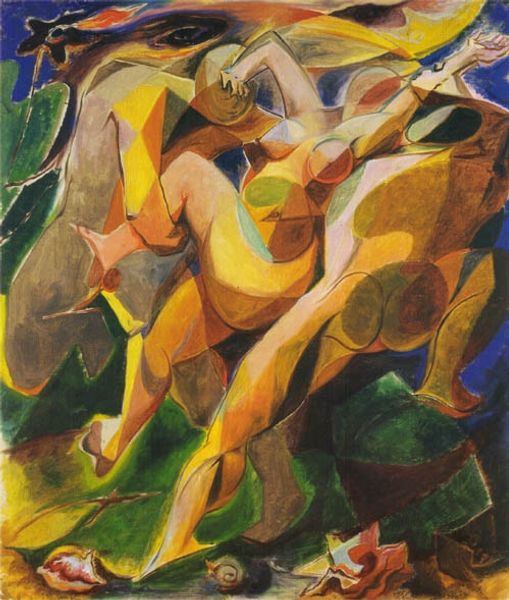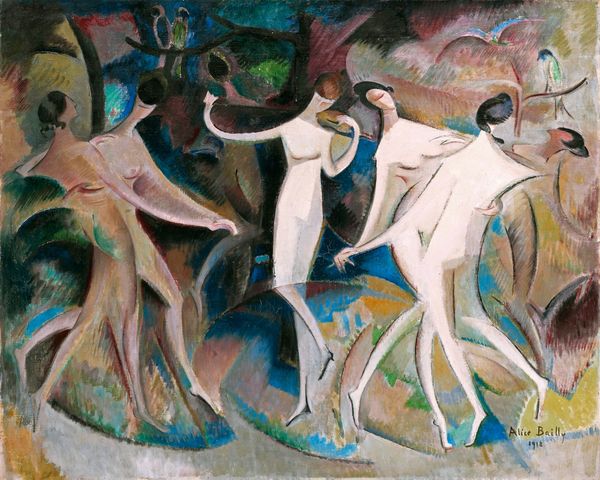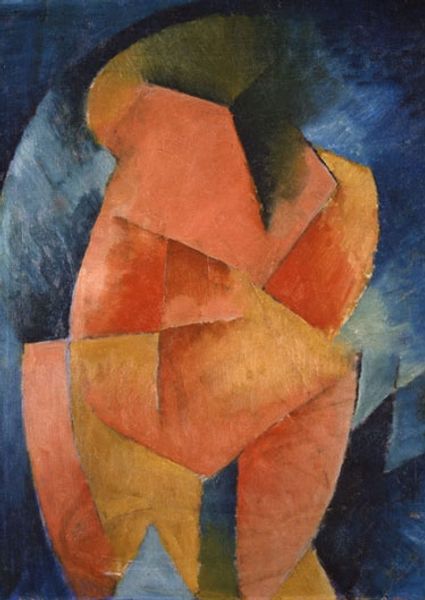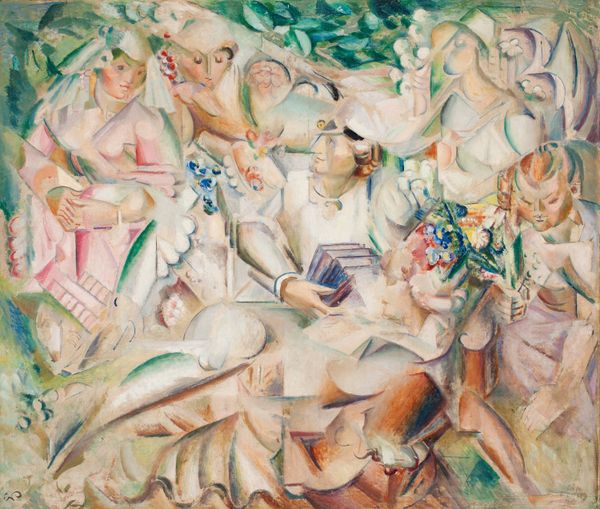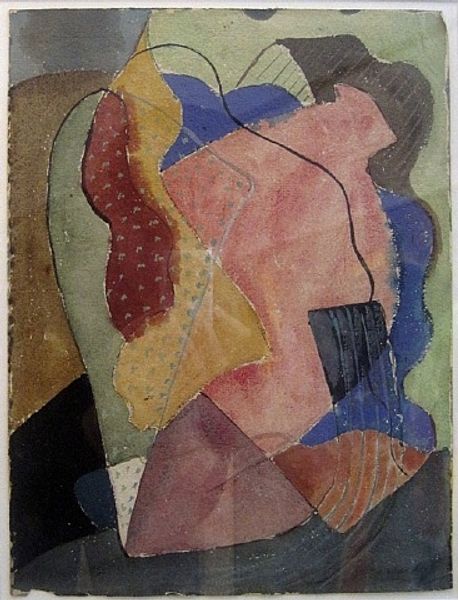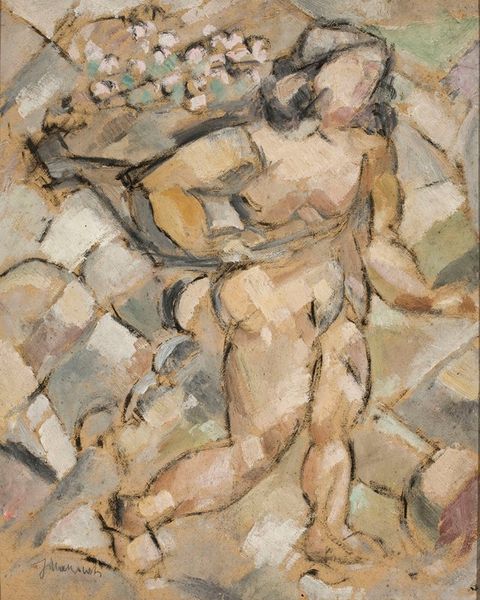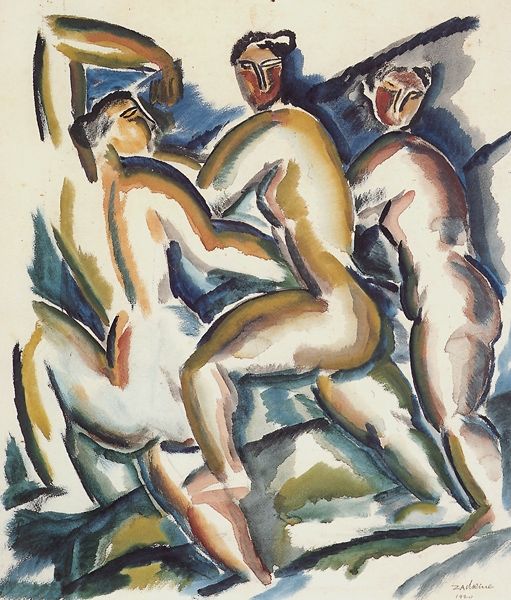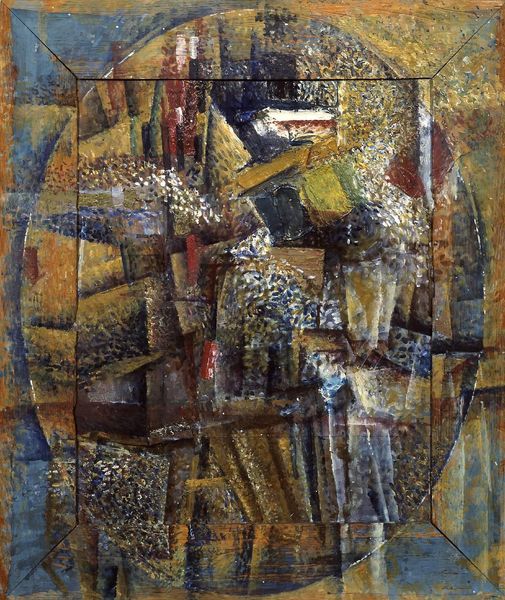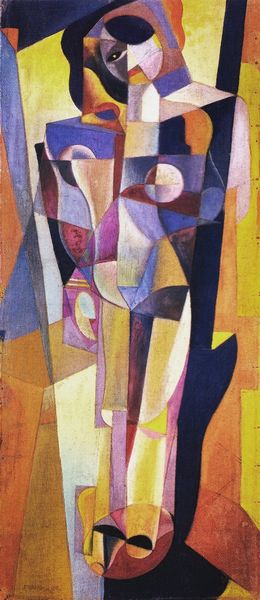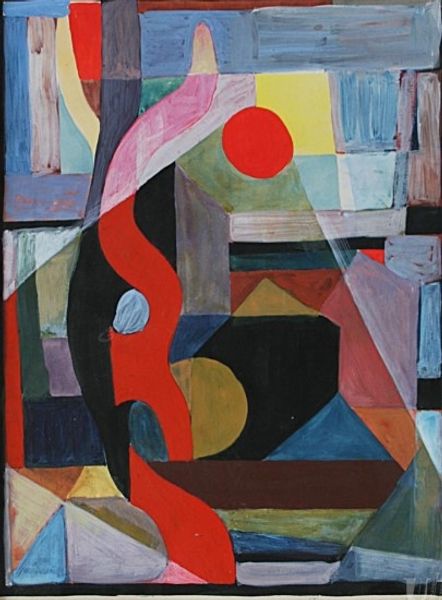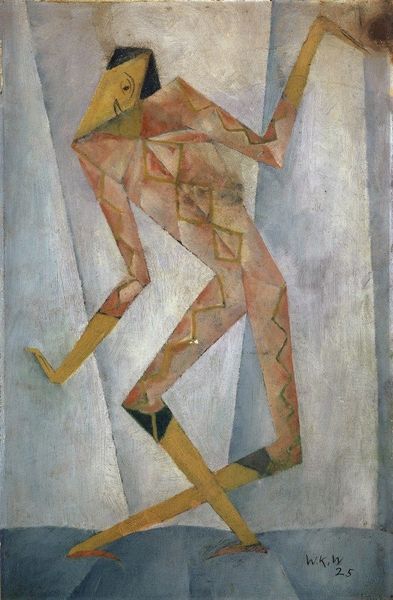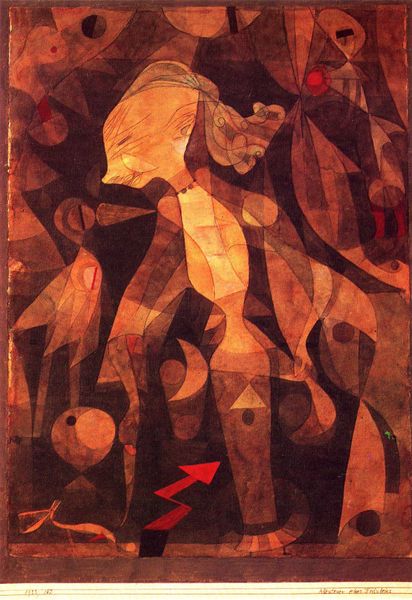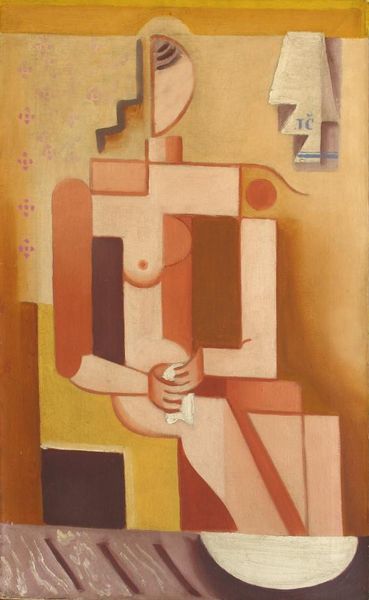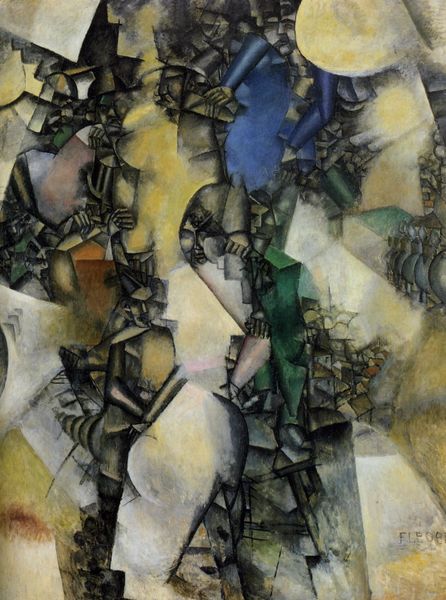
oil-paint
#
cubism
#
oil-paint
#
figuration
#
geometric
#
abstraction
#
history-painting
#
nude
#
orphism
Dimensions: 207 x 173 cm
Copyright: Public domain
Curator: Let’s consider Robert Delaunay’s "The Three Graces," completed in 1912. We observe an oil on canvas piece. What's your initial take? Editor: It strikes me as fragmented, a deconstruction of the female form almost violent in its geometry. It evokes a sense of anxiety despite the subject matter referencing classical ideals of beauty. Curator: Precisely. Note how Delaunay dismantles the figures into geometric components, aligning it with the evolving language of Cubism and his Orphist theories. The application of color, arranged to facilitate spatial reading, reveals an analytical interpretation. Editor: Yet it also brings up questions around the male gaze and the historical objectification of women within art history. Depicting women as fragmented forms aligns, sadly, with certain modernist tendencies to dehumanize its subjects in search of “the new.” I also can't ignore that these Graces are coded White, re-inscribing very specific and exclusive standards of beauty. Curator: These are valid, very salient, points. But in strictly formal terms, examine how the arrangement isn’t chaotic. The interplay of sharp angles and softer curves creates a visual rhythm. And look how the tones— predominantly, but not entirely, warm — interact. The juxtaposition establishes a dynamic energy on the picture plane. Editor: Absolutely, Delaunay does engage dynamically with color and shape, but considering that history is relevant here. Classical iconography served patriarchal agendas by positioning female bodies as symbols of purity, fertility, or beauty. Therefore, any engagement requires awareness of those historical implications. What did it signify when Delaunay dissected them into geometric puzzles? Curator: An interesting point of consideration. One reading might suggest he’s attempting to redefine the very notion of beauty through abstraction, moving beyond superficial representation to an inherent formal essence. Editor: Perhaps, but such redefinitions always occur inside complicated networks of power and vision. Curator: I suppose we have different perspectives of what an artistic choice ultimately signifies. But that’s where the power of this work lies— in sparking conversation. Editor: Exactly, to look at it through formal properties and contextual framing offers a more multifaceted reading experience.
Comments
No comments
Be the first to comment and join the conversation on the ultimate creative platform.
